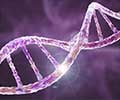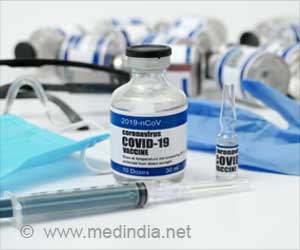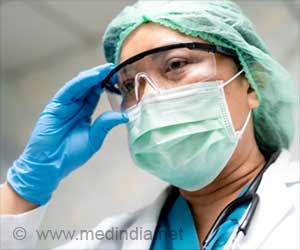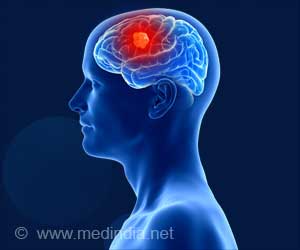Evaluating the efficacy of mouthwashes in lowering SARS-CoV-2 viral load in saliva. Can oral hygiene play a role in reducing COVID-19 transmission?
- Recent research explores the potential of mouthwashes to reduce the viral load of SARS-CoV-2 in saliva
- Mouthwashes containing CHX, H2O2, and CPC were evaluated with varying results
- Despite some limitations, the study suggests mouthwashes might play a role in combating viral transmission
How Mouthwashes Can Potentially Combat SARS-CoV-2 Transmission
SARS-CoV-2 is a virus with an envelope and an outer lipid membrane. To initiate infection, the SARS-CoV-2 spike protein attaches to the host's angiotensin-converting enzyme II (ACE2) receptor. ACE2 is abundant in the oral cavity and oral epithelial cells.COVID-19 causes a wide variety of symptoms, from asymptomatic to severe infection; nevertheless, the majority of those infected with SARS-CoV-2 experience very minor symptoms. COVID-19 can be identified in saliva, nasopharyngeal swabs (NPS), oropharyngeal swabs (OPS), and bronchoalveolar-lavage fluid.
To reduce SARS-CoV-2 transmission, several non-pharmaceutical methods have been introduced, including the use of face masks, social distancing, and maintaining good hand and respiratory cleanliness. Viricidal techniques targeting the lipid envelope of SARS-CoV-2 have also been developed.
Previous research has found that some mouthwash and toothpaste ingredients can disrupt the SARS-CoV-2 envelope protein, effectively inactivating SARS-CoV-2 and preventing viral transmission.
Mouthwashes are classified according to their active components, which can include triclosan, chlorhexidine (CHX), cetylpyridinium chloride (CPC), or essential oils. Antimicrobial mouthwashes containing cetylpyridinium chloride, povidone-iodine, or chlorhexidine gluconate have been shown to successfully reduce virus loads in saliva.
According to a recent study, CHX mouthwash effectively lowered SARS-CoV-2 virus levels in a patient's saliva for two hours after using the mouthwash. After two hours, however, there was an increase in viral load. There is currently no data on how mouthwashes containing CHX, hydrogen peroxide (H2O2), and CPC influence viral load.
Can Mouthwashes Diminish the Viral Load of COVID-19 Patients?
A recent pilot study looked at the efficiency of three antimicrobial mouthwashes containing 1.5% hydrogen peroxide, 0.2% chlorhexidine digluconate, and cetylpyridinium chloride in lowering SARS-CoV-2 virus load in the saliva of COVID-19 positive hospitalized patients.The viral load was assessed at various time intervals after rinsing, including 30 minutes, one hour, two hours, and three hours. The effectiveness of mouthwashes was established in this study by comparing the viral load in the test group, which completed three mouthwashes, and the controls, who did not rinse at all.
Patients between the ages of 18 and 74 who were diagnosed with COVID-19 and hospitalized at Newham University and Royal London Hospitals between April and October 2021 were included in the current study. During this time, the prevalent circulating strain was the SARS-CoV-2 Delta variant.
In this pilot trial, forty patients were randomly assigned to one of four test groups, each with ten individuals. Patients in Group 1 were given 0.2% CHX mouthwash, Group 2 was given 1.5% H2O2 mouthwash, Group 3 was given CPC mouthwash, and Group 4 was the control group.
Mouthwashes and the Transient Reduction of SARS-CoV-2 in Saliva
Both the test and control groups showed a marginally significant reduction in SARS-CoV-2 virus load in saliva two and three hours after rinsing.There was no significant change in viral load between the tested mouthwashes and the control group. Mouthwashing or spitting may result in viral clearance and, as a result, a decreased viral load in saliva.
Several investigations have shown that lower concentrations of CPC can inactivate several SARS-CoV-2 strains, including the Wuhan, Alpha, Beta, and Gamma types. However, it is unknown how different strains interact with different mouthwashes.
Although mouthwashes reduce viral load in SARS-CoV-2-infected people's saliva, the virus continues to reproduce in the upper respiratory epithelia, restoring viral loads in the saliva.
Constraints in Evaluating Mouthwash Efficacy Against COVID-19
The current study had some limitations, such as studying severely ill COVID-19 hospitalized patients who were on oxygen assistance via a nasal cannula, which lowers salivary flow. Furthermore, it was challenging to meet all study criteria, especially the requirement that participants refrain from drinking, eating, or practicing dental hygiene for at least 30 minutes before each saliva sample was obtained.Despite these limitations, the study results show that none of the three mouthwashes examined showed a significant difference in SARS-CoV-2 infected patients' saliva virus levels when compared to controls. More research is needed to completely understand the influence of SARS-CoV-2 viral load and transmission on oral care products.
Source-Medindia










